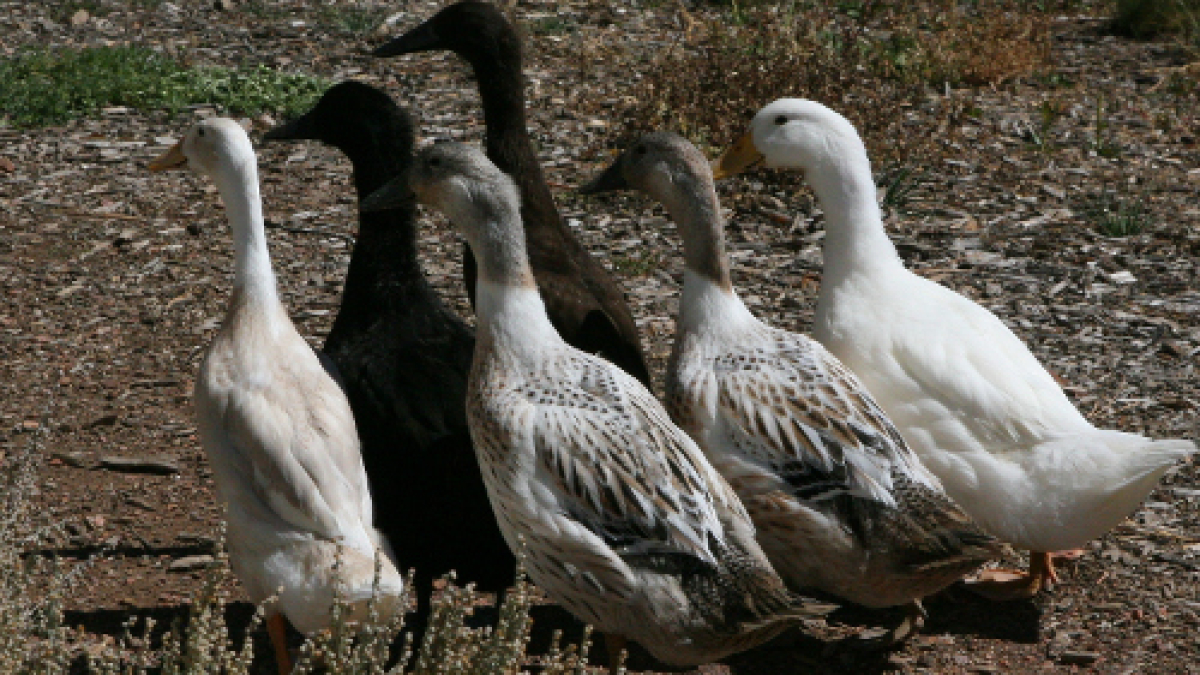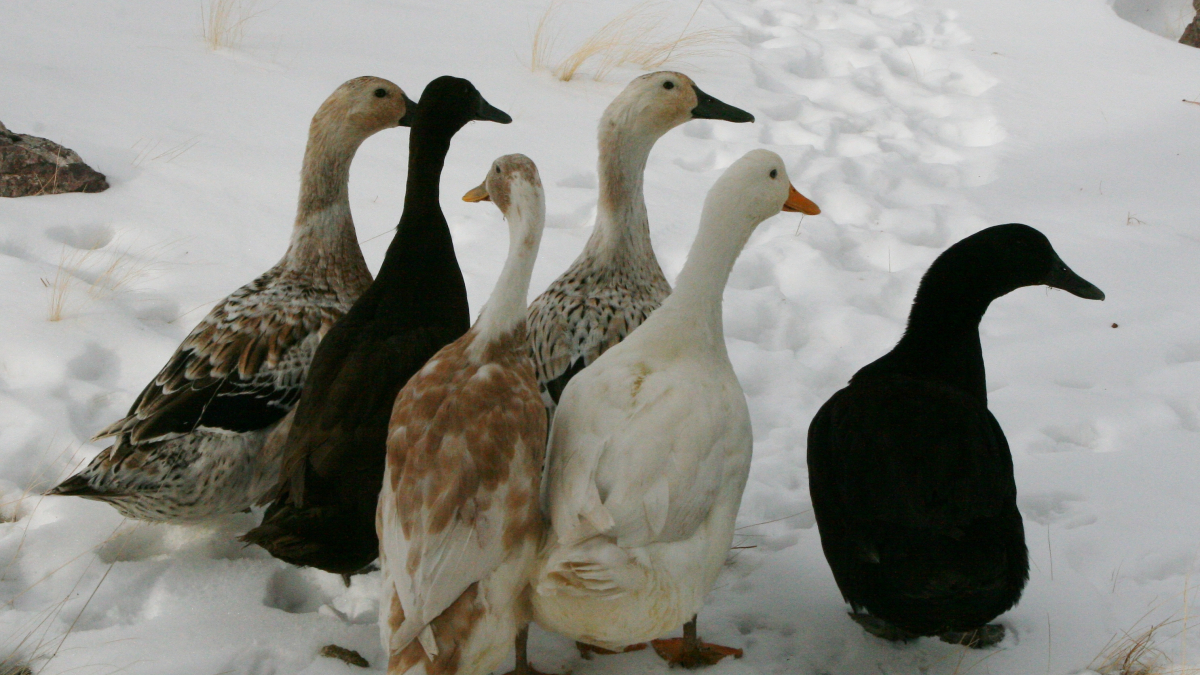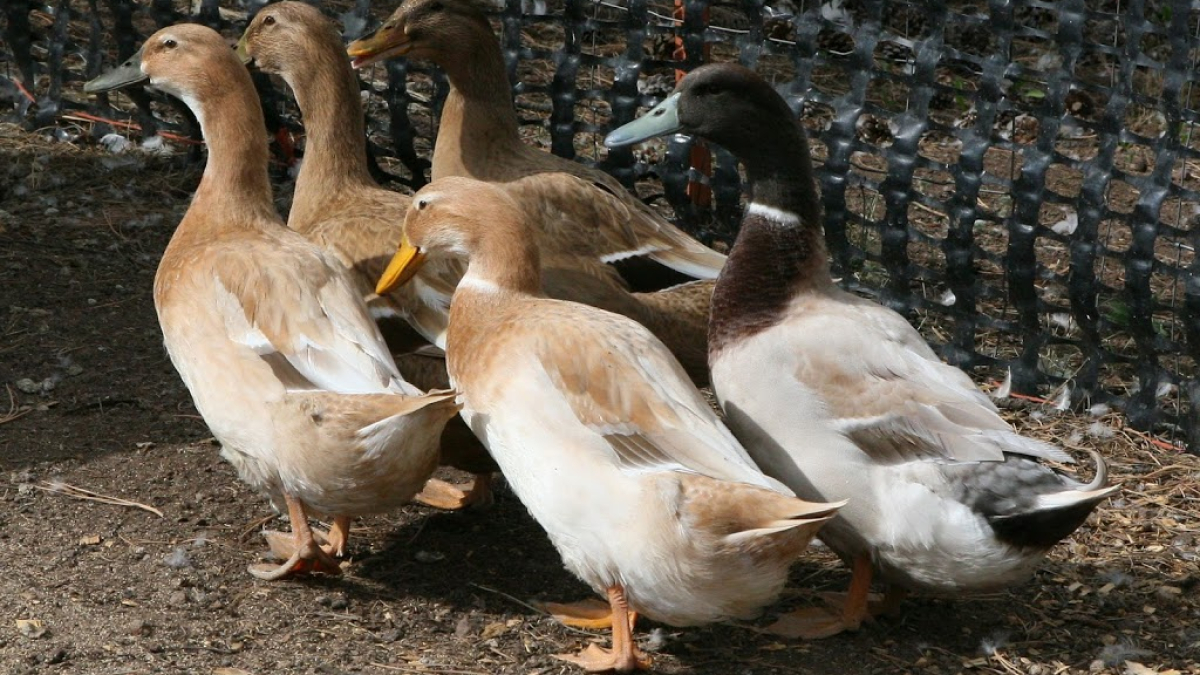WINTER DUCKS
 Our ducks fare well even in the winters here at 9,000 feet. Our temperatures can range from roughly +60F to -20F. The other day it literally started out at -5F and reached +60F in the afternoon! Most often the sun is out at least a portion of the day, occasionally not. Sometimes it’s quite windy, other times not. Sometimes there is snow on the ground, other times not. No matter the weather, the ducks will usually spend most of the day outside, and often out foraging for whatever tidbits they might find. Only on the coldest days they might spend a good portion of the time in their house, outside of the wind and cold.
Our ducks fare well even in the winters here at 9,000 feet. Our temperatures can range from roughly +60F to -20F. The other day it literally started out at -5F and reached +60F in the afternoon! Most often the sun is out at least a portion of the day, occasionally not. Sometimes it’s quite windy, other times not. Sometimes there is snow on the ground, other times not. No matter the weather, the ducks will usually spend most of the day outside, and often out foraging for whatever tidbits they might find. Only on the coldest days they might spend a good portion of the time in their house, outside of the wind and cold.
Ducks are quite well adapted for the cold. As water birds, the rain and snow are no problem for them. Their feathers shed off the water, and their down keeps them quite warm. I guess that’s why we make coats out of down with water resistant outer shells for ourselves!
 With these cold temperatures the water does freeze, and winter adjustments need to be made. There are different ways of keeping the water liquid. My best solution is to keep a water heater in the bowl. It is on a timer, and usually turns on around 3am, so they will have water to drink in the morning. I turn it on occasionally during the day if the water is freezing, just for an hour or two off and on. The timer we have makes it easy to adjust like that. We keep our bowl on a raised platform over a hole in the ground, covered with hardware cloth. Normally the water will slowly drain from the hole into the earth. In winter this hole fills up with ice and never melts, so I need to be careful to empty the bowl without spilling more water into (onto) this hole. Recently I got out the flame thrower, melted the ice under the bowl as much as I could without burning the frame, then raised the bowl off the frame with an additional support to keep it from freezing onto the frame. I’ve found it’s helpful to keep all snow cleared from around the bowl as soon as possible. If not done, it quickly ices up and makes it nearly impossible to lift the bowl for emptying and refilling.
With these cold temperatures the water does freeze, and winter adjustments need to be made. There are different ways of keeping the water liquid. My best solution is to keep a water heater in the bowl. It is on a timer, and usually turns on around 3am, so they will have water to drink in the morning. I turn it on occasionally during the day if the water is freezing, just for an hour or two off and on. The timer we have makes it easy to adjust like that. We keep our bowl on a raised platform over a hole in the ground, covered with hardware cloth. Normally the water will slowly drain from the hole into the earth. In winter this hole fills up with ice and never melts, so I need to be careful to empty the bowl without spilling more water into (onto) this hole. Recently I got out the flame thrower, melted the ice under the bowl as much as I could without burning the frame, then raised the bowl off the frame with an additional support to keep it from freezing onto the frame. I’ve found it’s helpful to keep all snow cleared from around the bowl as soon as possible. If not done, it quickly ices up and makes it nearly impossible to lift the bowl for emptying and refilling.
Notice the wire frame over the top of the bowl–this is not only to hold the electrical wire up (it goes upward to the framework of the pen), but also to keep the ducks out of the bowl. I keep this deeper bowl for them in the winter so they my dip their heads into deep water and keep their eyes clean, which is important. On occasional warm days I will fill a pool for them to bathe, but that doesn’t happen often.
 Inside their house (the duckagon), I keep a heat lamp for the coldest of nights. It is on a thermostat and also a timer. The timer is set for the thermostat to come on at about the time we usually lock them in the house at night, and goes off around the time I usually let them out in the morning. The thermostat is now set for around 28F. I don’t want it running all the time, just on the coldest of nights, and often I find that even when it’s pretty cold, it’s in the 30’s, probably due to their own body heat keeping the house warm. When they were younger and it was getting cold, it was used more often and set at a higher temperature, but they are big girls now and can handle more cold. I keep one of the vents (under the roof edge) open most of the time, only closing it on the coldest of nights, maybe when it’s under 10 or so.
Inside their house (the duckagon), I keep a heat lamp for the coldest of nights. It is on a thermostat and also a timer. The timer is set for the thermostat to come on at about the time we usually lock them in the house at night, and goes off around the time I usually let them out in the morning. The thermostat is now set for around 28F. I don’t want it running all the time, just on the coldest of nights, and often I find that even when it’s pretty cold, it’s in the 30’s, probably due to their own body heat keeping the house warm. When they were younger and it was getting cold, it was used more often and set at a higher temperature, but they are big girls now and can handle more cold. I keep one of the vents (under the roof edge) open most of the time, only closing it on the coldest of nights, maybe when it’s under 10 or so.
DOWN TO 5 DUCKS
 |
| Golden Cascades, 17 Weeks Old, 4 Hens, 1 Drake |
Now we’ve got the final count. After discovering that we had two drakes (rather than just one, as planned) we have now donated one of the drakes to a nearby Wolf Sanctuary. I’m sure the wolves there appreciate the donation. The photo above shows the ducks we plan to keep indefinitely. Hopefully, the drake will allow us to have a few baby ducklings in the spring.
The last batch of ducks we had remained unnamed, other than the colored bands they had around their ankles (pink, green, blue, etc.) This time they look different enough that I’m planning to go ahead and name them. The names are still up in the air a bit, but for now they are as follows:
Wily – This is the drake that fooled us into believing he was a she, and now his life has been spared. Other than the blue-gray bill, I believe his plumage is closer to the preferred colors for this breed. (Per Dave Holderread.) Also, he has better camouflage than the other drake had, which is my preference.
Here is Ellie May. I just thought it was a cute name, and this duck has no outstanding characteristics.
Meet Gertrude. I just thought a duck should be named Gertrude.
This is either Spot, or Splash, or Dory. One of these days I will decide. Spot would be because when she was little she had a spot on her right foot. Now she has a couple of black spots on her beak. Splash would be because she’s the first one in the pool many a time, and runs there first thing in the morning, before going to the food dish. Because she likes the water, Tim thought of Dory, after the fish in Finding Nemo. So, Dory would be cute….but which name will stick? Any ideas?



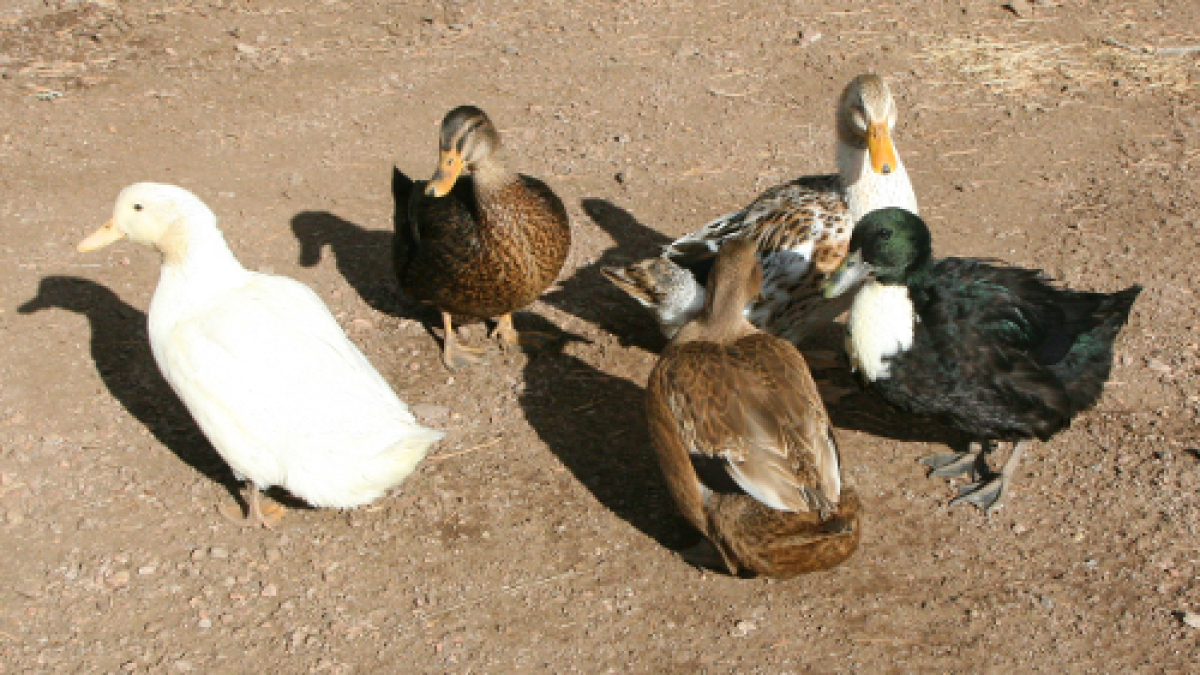





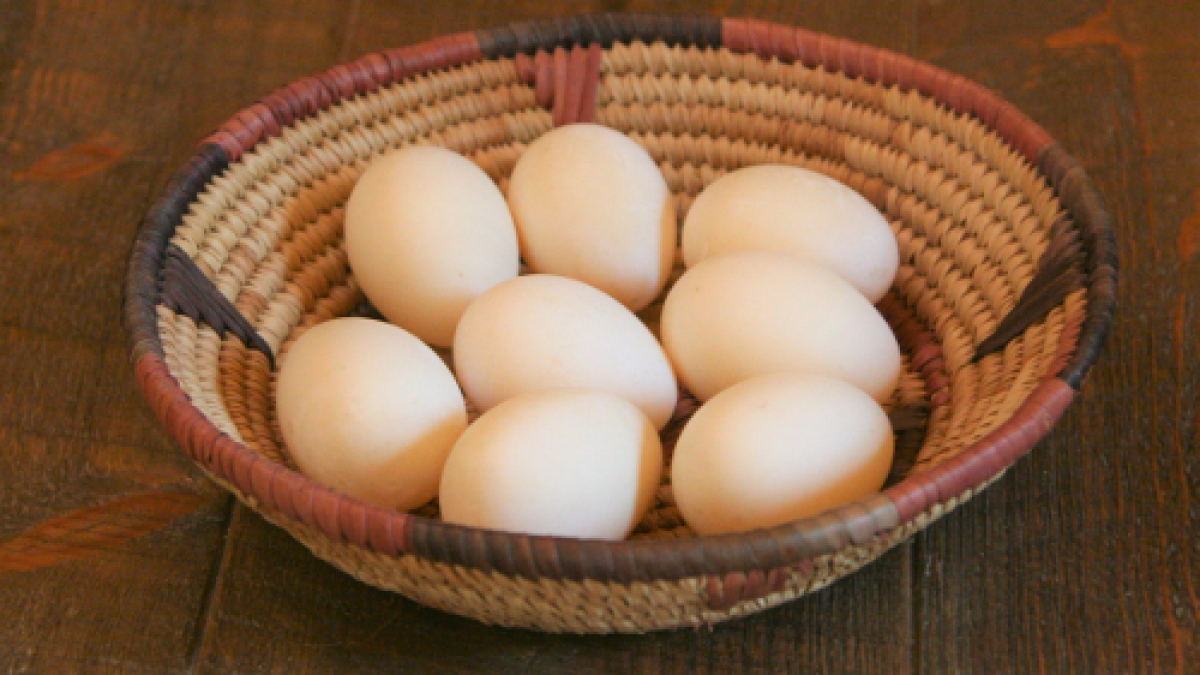

 As you can see, this lighting program has worked, and ducks are now laying. With our “Duckagon” I am able to open up the top each morning to reach in and grab eggs. If the eggs are on the far side, I have my nifty claw to shove them over.
As you can see, this lighting program has worked, and ducks are now laying. With our “Duckagon” I am able to open up the top each morning to reach in and grab eggs. If the eggs are on the far side, I have my nifty claw to shove them over. Now we look forward to getting 5 eggs in a day, to know that all the girls are in full swing! The ducks are now kept in their paddock until 9-10 am just to be sure we’ve gotten all the eggs. Normally eggs are laid before I get out to feed them, but occasionally there’s a late layer. Sometimes, after they’ve been let out to roam (they are free-range, after all) we find eggs in strange places: under trees or bushes, usually. This year, Tim tried crafting a next box for them to see if they’d like to put their eggs there. No eggs in that box yet (they’ve always been in the house early) but we have seen ducks take turns sitting in that box for a bit!
Now we look forward to getting 5 eggs in a day, to know that all the girls are in full swing! The ducks are now kept in their paddock until 9-10 am just to be sure we’ve gotten all the eggs. Normally eggs are laid before I get out to feed them, but occasionally there’s a late layer. Sometimes, after they’ve been let out to roam (they are free-range, after all) we find eggs in strange places: under trees or bushes, usually. This year, Tim tried crafting a next box for them to see if they’d like to put their eggs there. No eggs in that box yet (they’ve always been in the house early) but we have seen ducks take turns sitting in that box for a bit!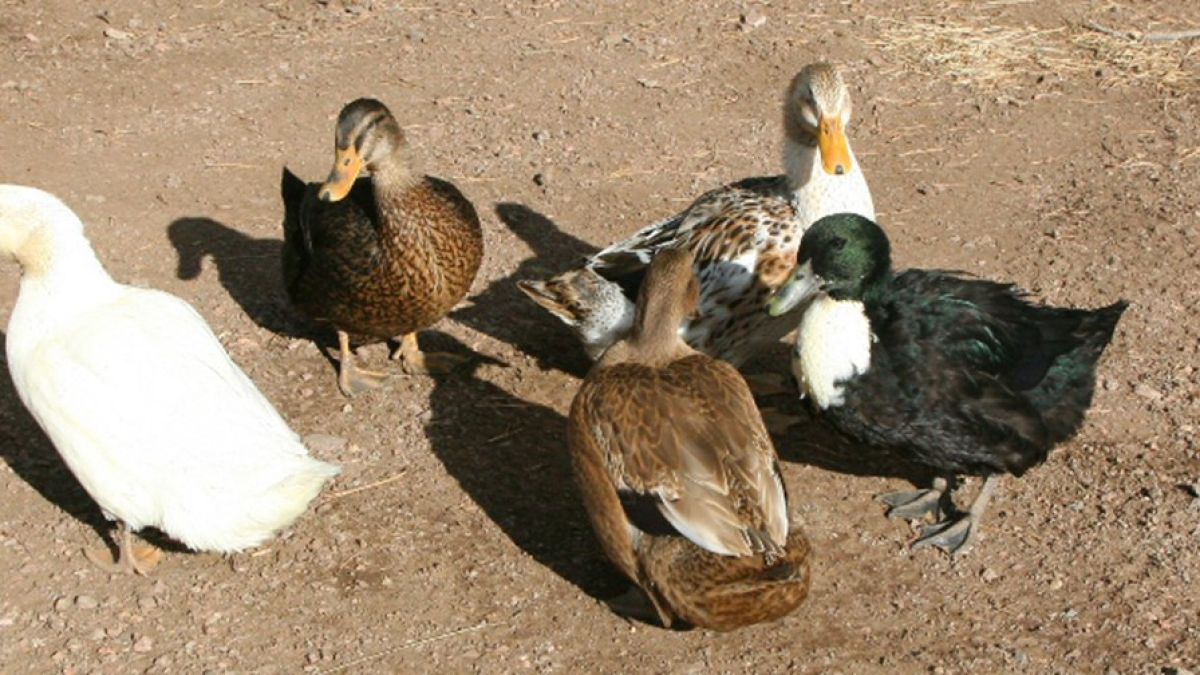

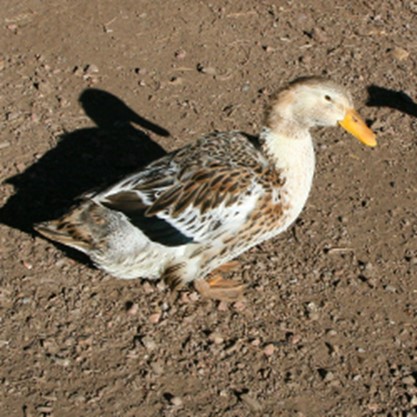
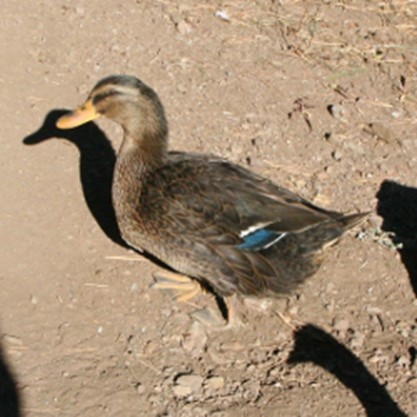
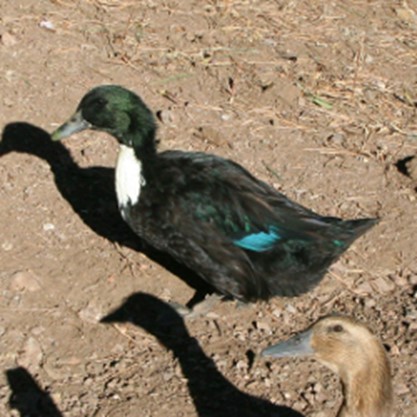
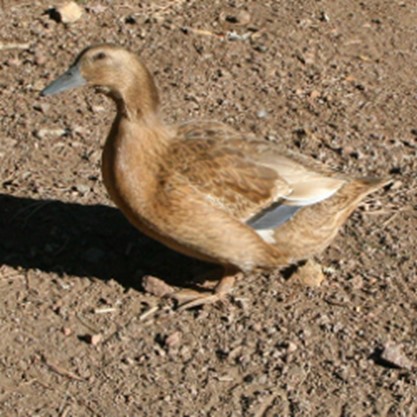
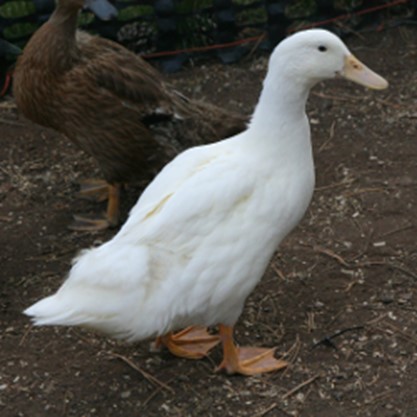
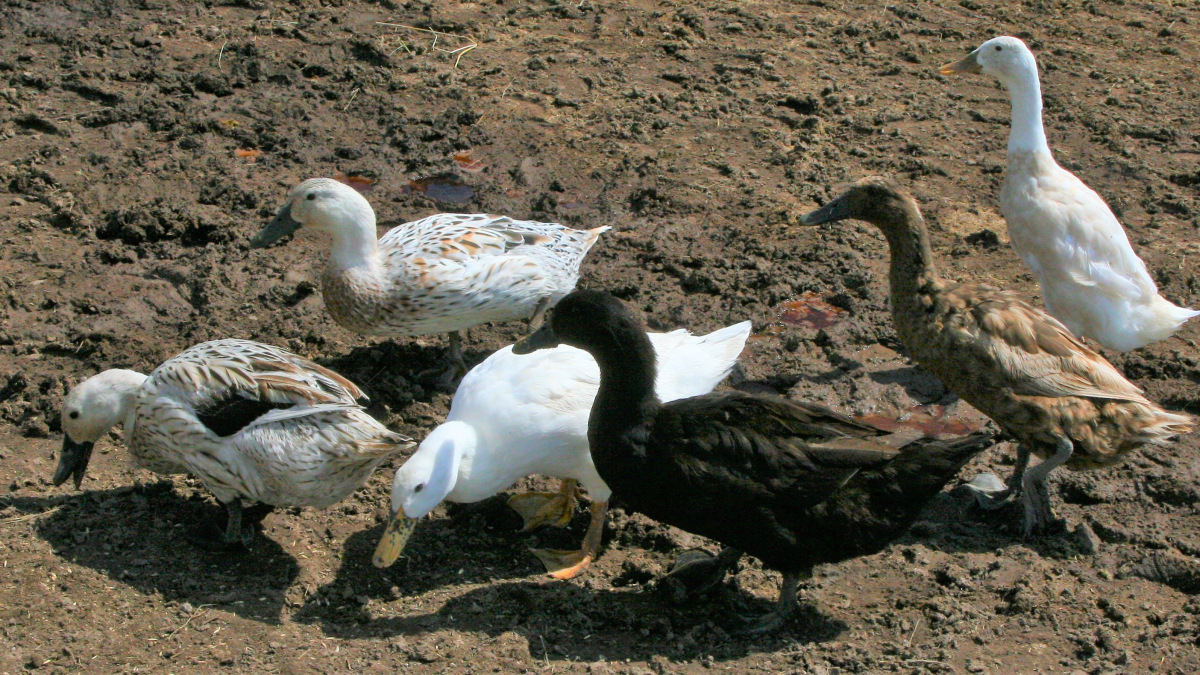

 Our “Six-Pack” of ducklings arrived in early August 2016. Many mail-order companies require a minimum of ten ducklings, but we didn’t want that many. We wanted only layers and no extra drakes we would have to butcher. We found that
Our “Six-Pack” of ducklings arrived in early August 2016. Many mail-order companies require a minimum of ten ducklings, but we didn’t want that many. We wanted only layers and no extra drakes we would have to butcher. We found that 






